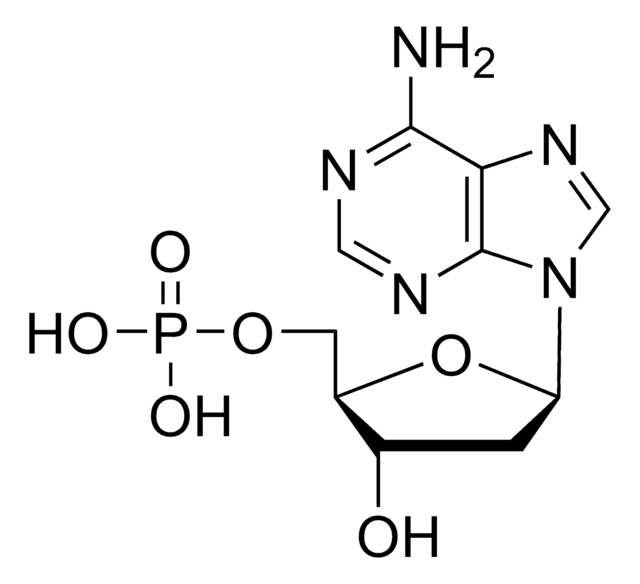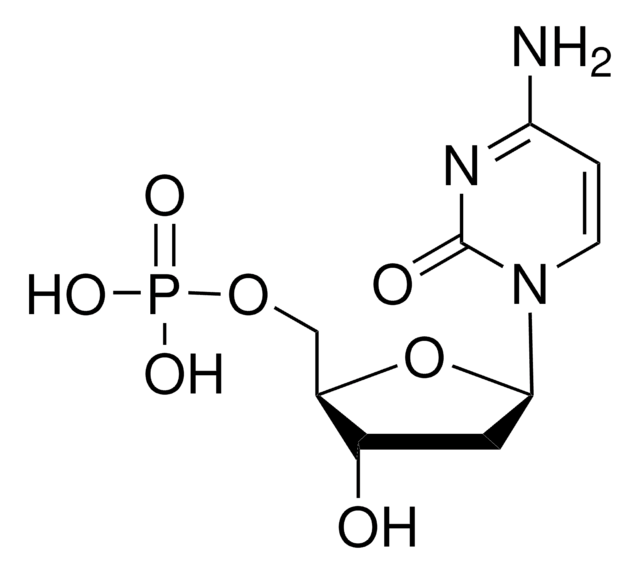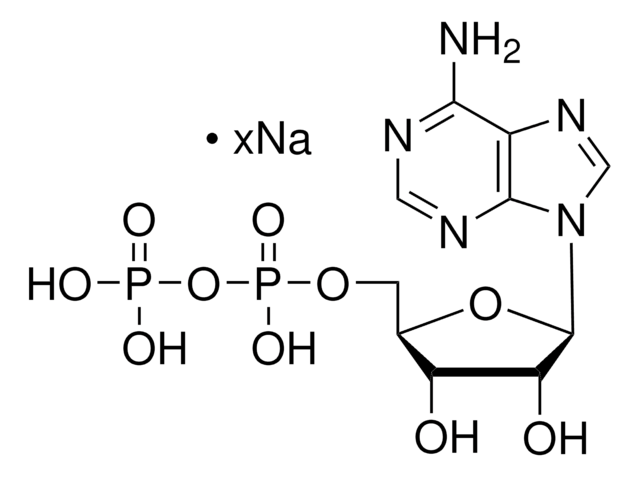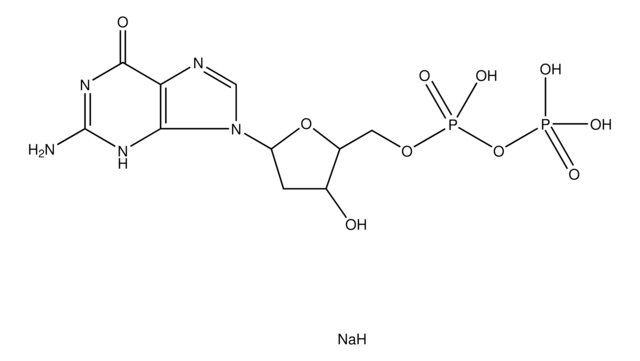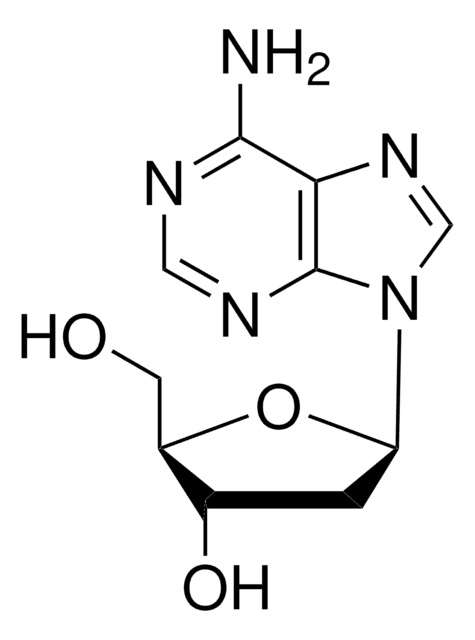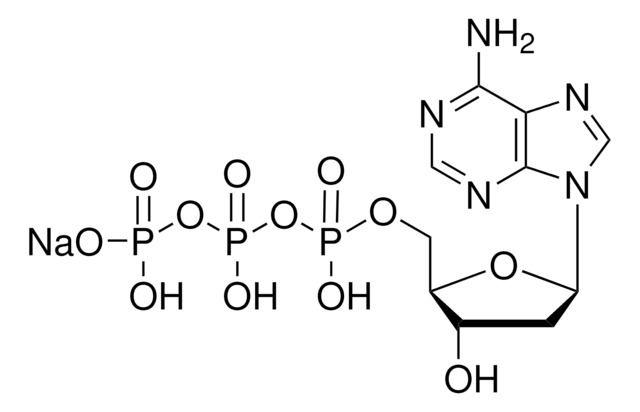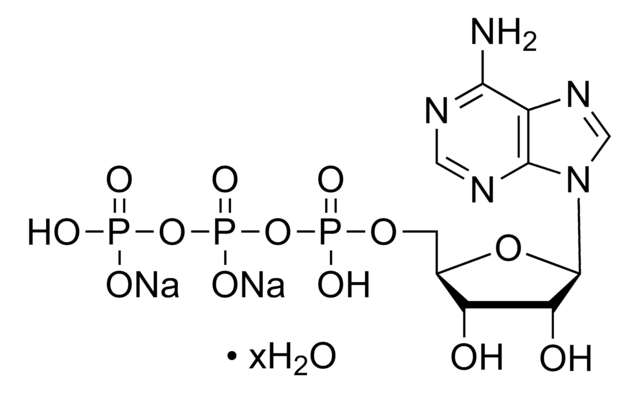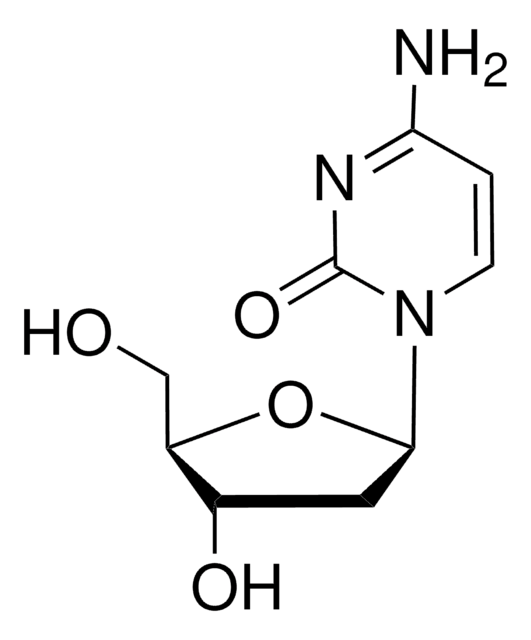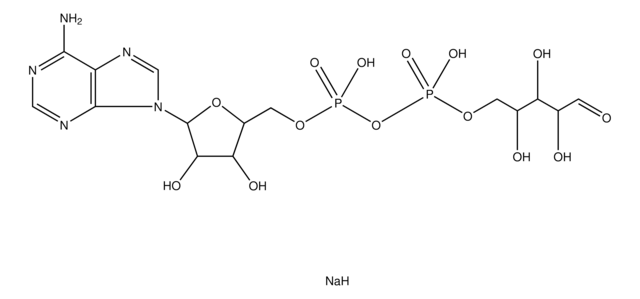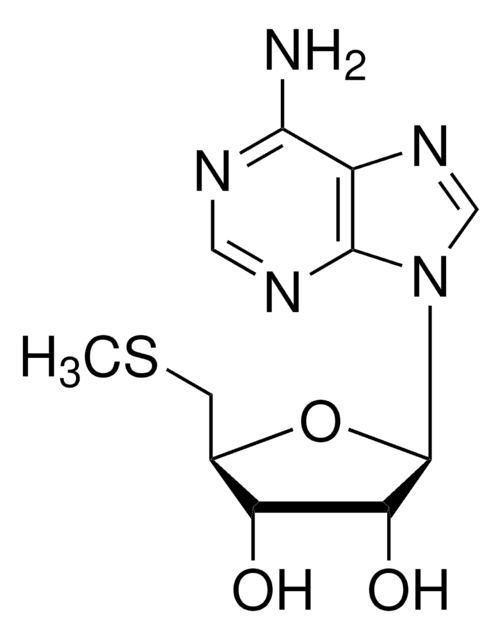Kluczowe dokumenty
D6000
2′-Deoxyadenosine 5′-diphosphate sodium salt
Synonim(y):
dADP
About This Item
Polecane produkty
pochodzenie biologiczne
synthetic (organic)
Próba
≥95% (HPLC)
Formularz
powder
temp. przechowywania
−20°C
ciąg SMILES
[Na].Nc1ncnc2n(cnc12)C3CC(O)C(COP(O)(=O)OP(O)(O)=O)O3
InChI
1S/C10H15N5O9P2.Na.H/c11-9-8-10(13-3-12-9)15(4-14-8)7-1-5(16)6(23-7)2-22-26(20,21)24-25(17,18)19;;/h3-7,16H,1-2H2,(H,20,21)(H2,11,12,13)(H2,17,18,19);;
Klucz InChI
KZGAPWRJMWSNQO-UHFFFAOYSA-N
Opis ogólny
Zastosowanie
Hasło ostrzegawcze
Danger
Zwroty wskazujące rodzaj zagrożenia
Zwroty wskazujące środki ostrożności
Klasyfikacja zagrożeń
Acute Tox. 3 Dermal - Acute Tox. 3 Inhalation - Acute Tox. 3 Oral - Eye Irrit. 2 - Skin Irrit. 2 - STOT SE 3
Organy docelowe
Respiratory system
Kod klasy składowania
6.1C - Combustible acute toxic Cat.3 / toxic compounds or compounds which causing chronic effects
Klasa zagrożenia wodnego (WGK)
WGK 3
Środki ochrony indywidualnej
Eyeshields, Faceshields, Gloves, type P2 (EN 143) respirator cartridges
Wybierz jedną z najnowszych wersji:
Masz już ten produkt?
Dokumenty związane z niedawno zakupionymi produktami zostały zamieszczone w Bibliotece dokumentów.
Klienci oglądali również te produkty
Nasz zespół naukowców ma doświadczenie we wszystkich obszarach badań, w tym w naukach przyrodniczych, materiałoznawstwie, syntezie chemicznej, chromatografii, analityce i wielu innych dziedzinach.
Skontaktuj się z zespołem ds. pomocy technicznej